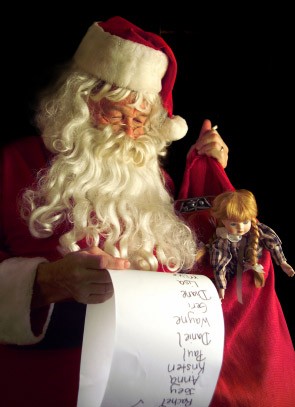
It will be Christmas soon and children world over are busy drafting their letters to their dear Santa.
According to the figures from the Universal Postal Union, the number of letters that reach Santa every year totals to around 8 million. Letters to Santa gained popularity in the nineteenth and twentieth centuries. In the 1880s, it was the American cartoonist Thomas Nast,who gave Santa his North Pole address.
The Letters to Santa program of the U.S. Postal Service has been receiving and replying to the mails for Santa for the last 101 years. Even with a simple address line as "Santa Claus, North Pole, Alaska, " the dispatch is accepted and if there is a return address, a reply is given out.
In the age of internet, one would assume that the craft of writing letters is losing but figures suggest there has been an increase every year in the letters to Santa. The United States Postal Service (USPS) Santa letter answering effort started in 1912 and since 1940 has been called "Operation Santa." It is considered the oldest letter answering effort by a national postal system.
Among other Countries, the Canadian Post has the most special postal code for letters to Santa Claus, and has been in operation since 1982. His address is: Santa Claus, North Pole, Canada, H0H 0H0. The British children send their letter to the Royal Mail's special address 'Santa/Father Christmas, Santa's Grotto, Reindeerland XM4 5HQ'.
Besides the postal services, there is also the traditional way of sending the letters to Santa. In a world of increasing consumerism, children should be allowed to 'feel' the tradition. The Scottish children used to stick their heads up the chimney and would shout out their Christmas desires. Among the Church going families, the usual practice that is still mainly followed among the Spanish and Latin American families is to leave the letters besides the Nativity Crib.
The Italians and even the Swiss Children used to leave their letters on the windowsill at night and it would 'mysteriously' get replaced by chocolates - a sign that Santa has taken the letter.
Beneath all the glitter and sweet greed for gifts, the letters to Santa is a poignant expression of a child towards the mystery and magic of Christmas. And the postal agencies have been doing a great job of acting as the elves of Santa, replying and sometimes even sending in gifts for the 'special' children.









